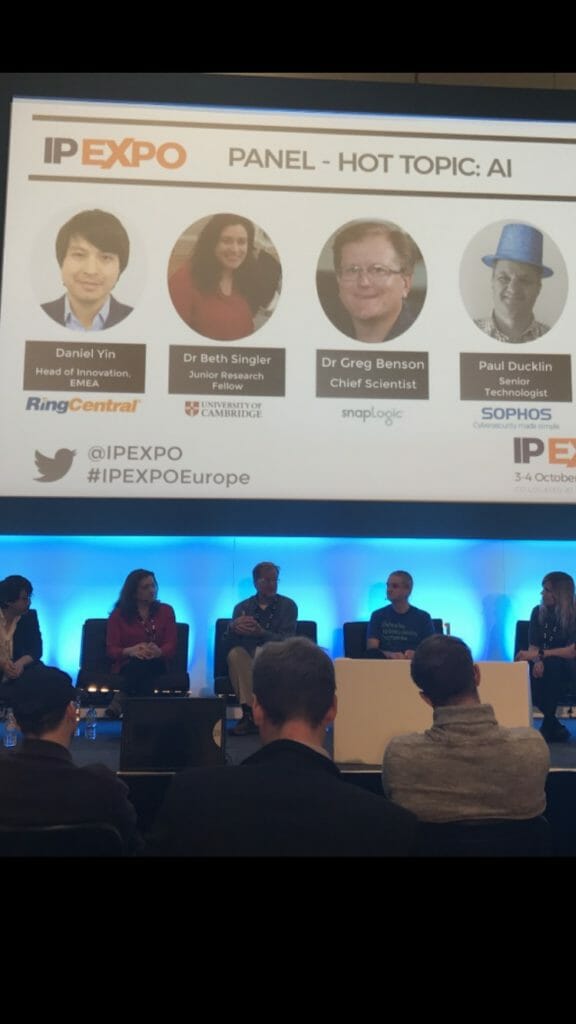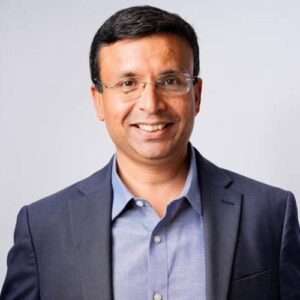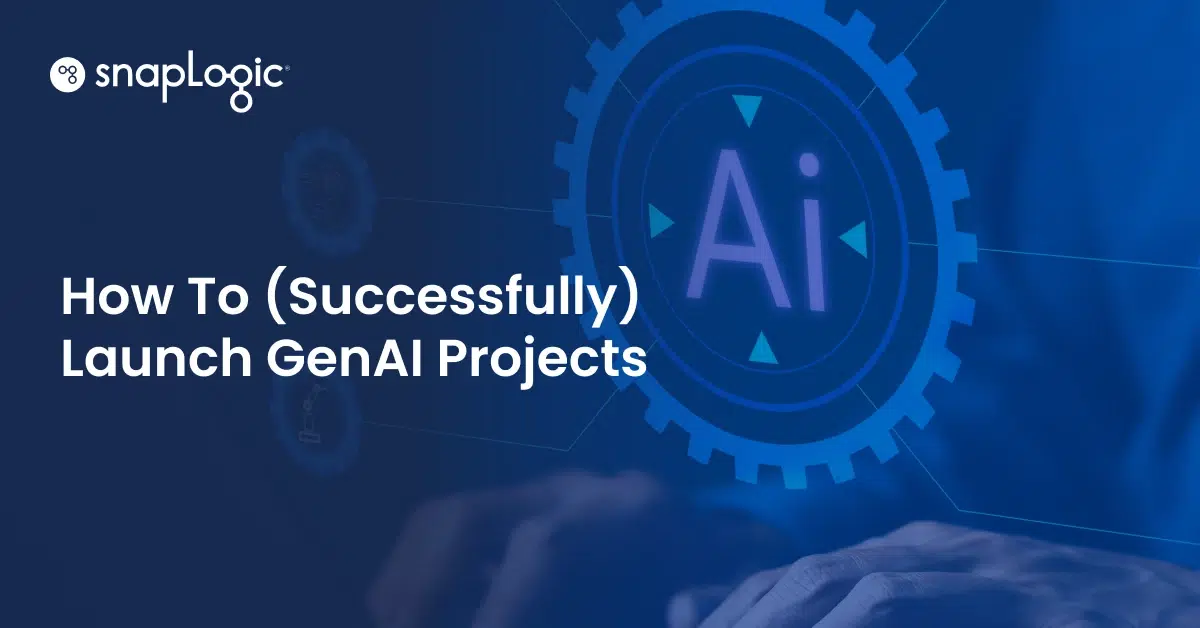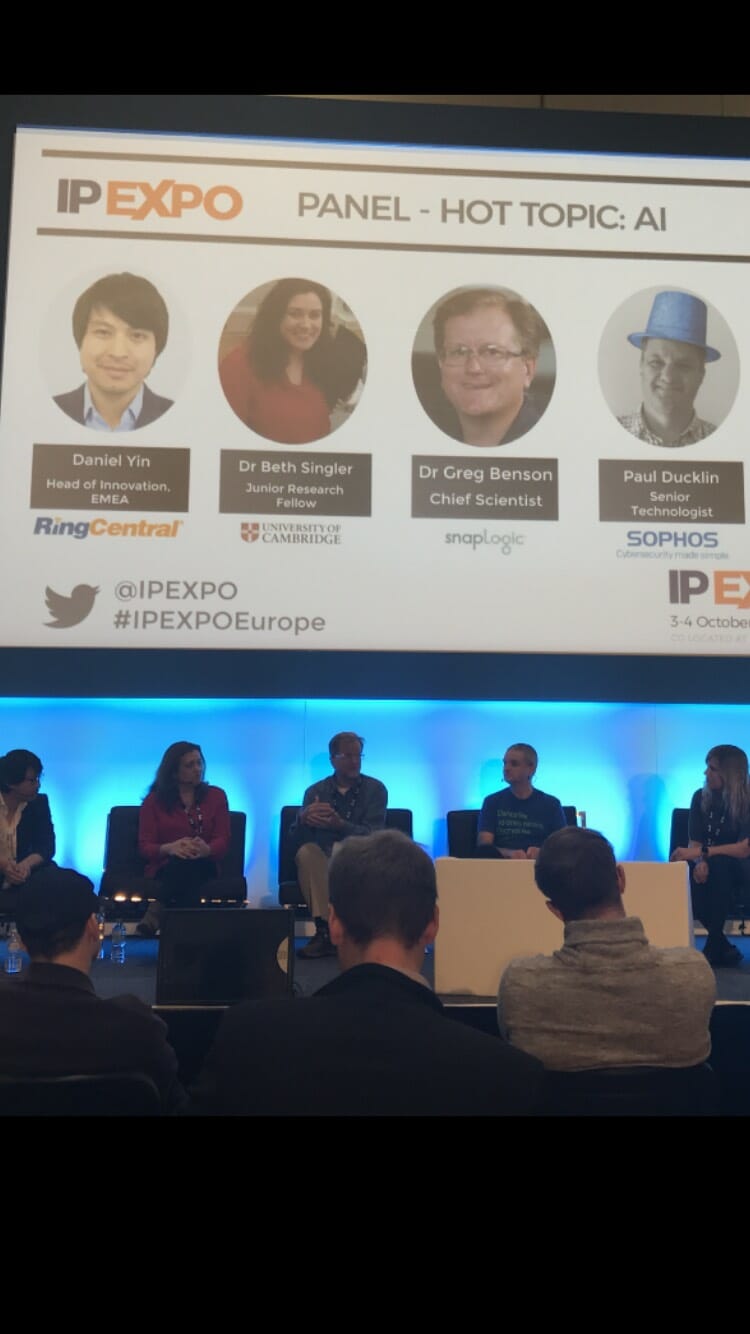Artificial Intelligence (AI) and machine learning (ML) have come to dominate business and IT discussions the world over. From boardrooms to conferences to media headlines, you can’t escape the buzz, the questions, the disruption. And for good reason – more than any other recent development, AI and ML are transformative, era-defining technologies that are fundamentally changing how we live and work.
While few will disagree with the potential impact of AI and ML, many are left scratching their heads as to how to apply these technologies in their own organizations and where to get started. These questions and concerns were certainly on everyone’s minds at the IP Expo Europe 2018 conference, Europe’s number one enterprise tech event, which took place last week in London. Time and again, whether asked in a post-keynote Q&A session or overheard on the show floor, “I know I need AI and ML, but where do I start?” was a common refrain.
SnapLogic Chief Scientist Greg Benson was on hand at the conference and set out to answer this key question, among others, in his presentation, “The AI Mindset: Bridging Industry and Academic Perspectives.” Greg, who is also a Professor of Computer Science at the University of San Francisco (USF), has experience with ML in both academic and industry settings.
In his talk, Greg outlined some of the common challenges that often trip up ML projects, and how to overcome them:
- Finding the right talent
- Continuous access to relevant data
- Data preparation and automation
- Exploring different algorithms with different features
- Automating training for up to date models
- Putting ML into production
He also discussed the AI mindset needed to help IT practitioners and other decision-makers get started:
- Combine academic and industry methodologies
- Understand the experimental nature of ML development
- Enable access to data (continuous, not just once)
- Understand the capabilities and limitations of ML algorithms
- Build a ML plan and allocate deployment resources up front
- Consider self-service data science tools
Next up was the “AI Panel Discussion” that Greg also participated in alongside representatives from RingCentral, University of Cambridge, Sophos, and MIT Technology Review. Drawing on his dual-role experience at both SnapLogic and USF, Greg observed how industry and academia approach problem solving differently, and how bringing the best of both perspectives to the table can accelerate AI development and success. He also asked industry leaders to encourage their elusive and skilled data scientists to teach at local universities to ensure knowledge transfer to our next generation of AI leaders. An academia/industry mindshare will go a long way toward closing the future skills gap and put us on a path of continued innovation for years to come.
Greg has a lot to say more to add to the ML discussion – look for first-person blog posts from him in the weeks to come.












